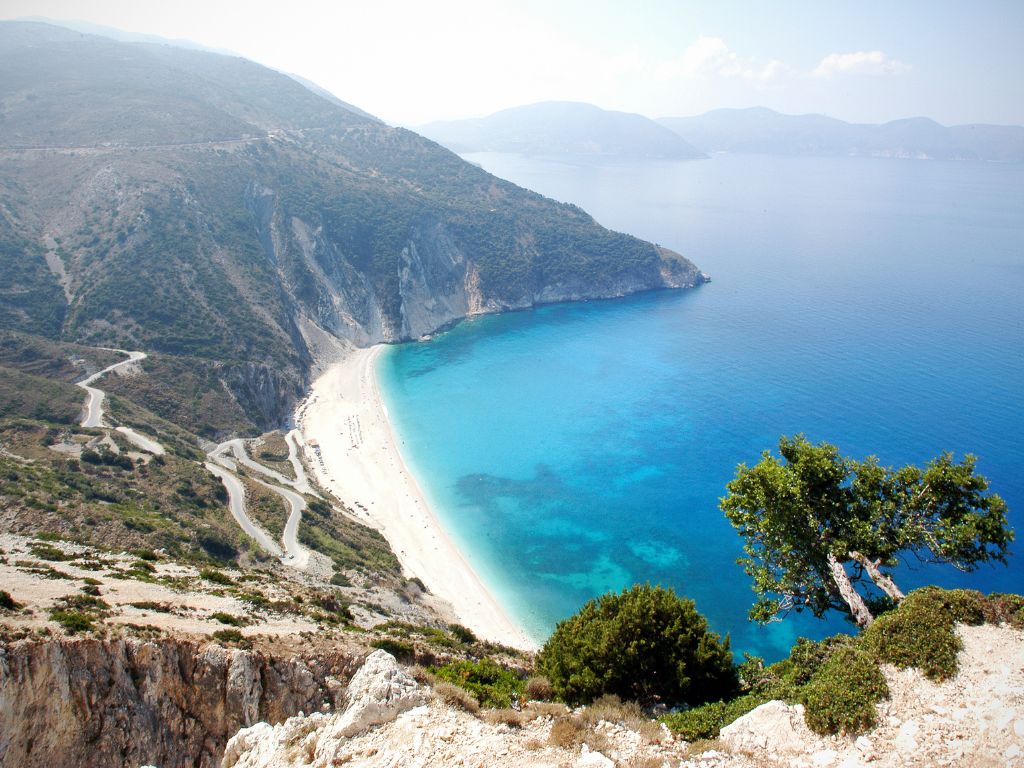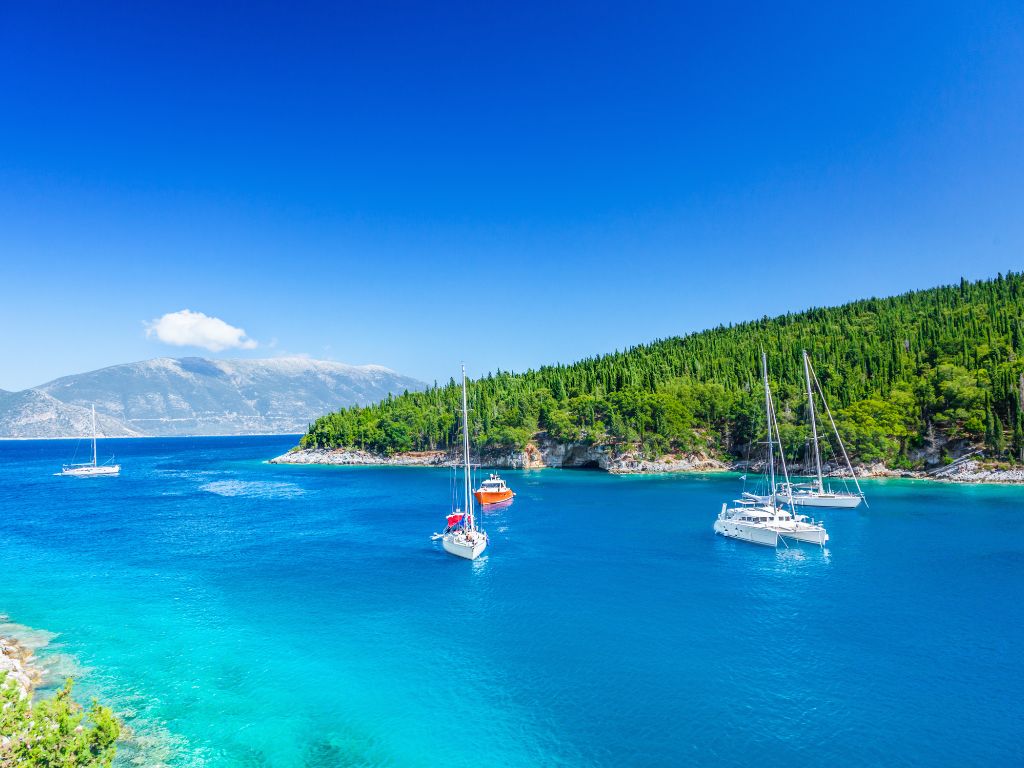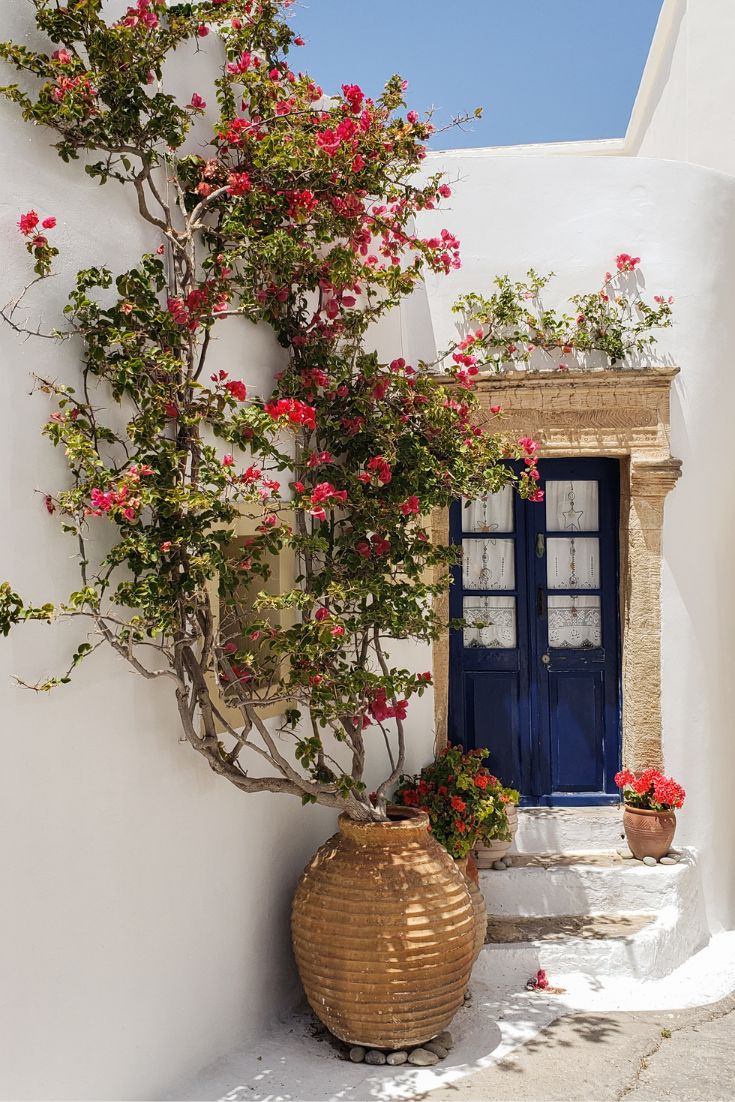Kefalonia

Kefalonia or Cephalonia is the great lady among the seven major islands of the Ionian Sea, being the largest of them all. The island’s strange shape, molded by earthquakes and tremors thousands of years ago, forms tiny gulfs and azure bays that appear to be part of an intricate lace design.
In some parts the pines reach all the way down to the sea- and its bright blue waters. In 1953 a violent earthquake almost wiped the island off the map. Thankfully, several traditional villages and antiquities managed to survive its catastrophic effects and can still be seen today.
The capital, Argostoli, is located on the edge of the bay right by the sea. The low traditional houses and stone streets make you forget that this is in fact the largest town in Cephalonia. The pedestrian zone of “Lithostroto” is the place to be. Here you can shop for local arts and crafts or take your afternoon coffee in one of the many tiny cafes.
The garden of Napier
A place of particular interest is Napier Park, named after Charles James Napier who was Governor of Cephalonia at a time when the island was under British Rule.
The British General wanted to create a safe haven for his children and his vision lives on today. The park is wonderfully overgrown with a wide variety of trees surrounded by fences following the Cephalonian prototype.

The lighthouse
A short distance from Argostoli, there is a white picturesque lighthouse called “Fanari” that used to guide the ships into the bay of the capital.
Famous not only for its clarity and green vegetation that almost reaches the sea, but also because this is the place where the movie “Captain Corelli’s Mandolin” was shot. The landscape, a serene combination of all shades of blue and green, more than fascinates visitors who, seemingly, always return.


Caves and attractions
Surrounded by a green landscape, picturesque Sami is the perfect base for exploring the nearby beaches and caves. The most well-known cave in Cephalonia is the Sea Cave Lake of Melissane. You can either walk on the slippery steps carved around the cave floor among stalactites and stalagmites, that are 20,000 years old or, better yet, explore the turquoise lake by boat.
The boat tour starts at a place where the sunlight comes through, creating breathtakingly beautiful shades in the water, and continues further into the cave. Right in the middle of the lake there is a small island, once a shrine to Nymphs, ergo the nickname of Cave Melissane as “The Cave of the Nymphs”.
The beaches of Kefalonia
Mirtos beach is the trademark of Cephalonia and one of the most photographed spots on the island and the very moment you step your foot on it, you will realize why. The scenery, as seen from above, is spectacular.
The antithesis of the bright green of the trees is the crisp white of the pebbles and the vibrant blue of the sea, all of which inspire awe in the visitor who is drawn to it.
Stay until dusk to admire one of the most beautiful sunsets you will carry in your heart for the rest of your life.
The water here is shallow and warm. The beach is famous for its dark red sand rich in clay similar to the clay used in numerous spa treatments.
Lovers of water sports will not feel left out at Ksi since here one can indulge in a great variety of water activities such as jet skiing and water skiing.


The village of Fiskardo
The little fishing village has been transformed into a cosmopolitan resort bustling with life.
What gives Fiskardo its unique character is the fact that, unlike the rest of Cephalonia, it remained unscathed from the catastrophic earthquake of 1953, retaining the island’s traditional architecture, thereby making it a wonderful combination of the old with the new.
What to do in Kefalonia
In general, Cephalonia is a haven for outdoor activities; from visits to organic wineries and hikes to the National Forest Park of Enos to canoe and kayak cave explorations. In addition, you will find a variety of water sports that can accommodate even the most eclectic tastes.




